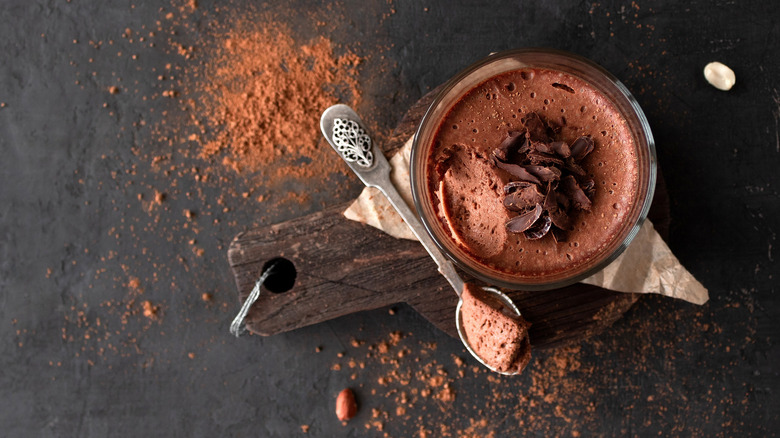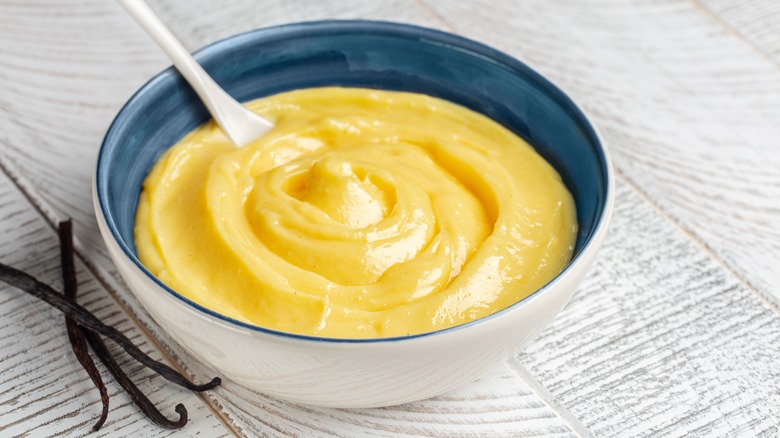Why You Need To Strain The Custard Base For Homemade Mousse
It might be hard for many Americans to imagine not delighting in a mousse dessert after finishing off Christmas dinner, but this beloved sweet wasn't always a U.S. favorite. According to Taste Atlas this pudding-like treat was originally born in France — which shouldn't be surprising considering that French-based bakers also brought us beignets and macaroons (via Delish). But while it's true that mousse hasn't been in the U.S. as long as our widely adored apple pie, which first appeared in the 1600s (per Culture Trip), it only took a few years after the first mousse recipe appeared in America in the late 18th century for it to become just as beloved a dessert to pair with coffee.
Although part of the reason this sweet caught on so fast was because it could easily be made with pudding mix, nothing can quite beat the taste of homemade mousse. And if you want to make a mousse from scratch for your next holiday gathering or dinner party, MasterClass reports you'll have to make a custard. But before you even start gathering the base of your mousse's ingredients, which includes eggs, milk, and gelatin, you need to be sure you have a strainer for your custard at the ready (per Baking Bites). Here's why.
Mousse makers beware, unstrained custard may curdle
While you would think that you'd want to avoid straining your custard to ensure it retains all the ingredients and thus all of its taste, according to Baking Bites, this is not the case. In fact, you need to strain your homemade custard for any custard-based dessert. The outlet reports that when you make custard, portions of your eggs may turn out cooked and even curdled, which endangers your custard's (and in this case your mousse's) smooth texture.
To properly strain your stove-top made custard base, Baking Bites reports that you will need to run it through a standard kitchen strainer once it's no longer liquid, though MasterClass recommends using a fine-mesh strainer for the best results. During the straining process, you need to ensure you don't put pressure on the custard. Once you've removed your custard of its offending lumps, MasterClass reports you should then add softened butter to the hot mixture so it will perfectly melt into your mousse's base.
After you allow your custard to settle, you'll be able to use it to make a deliciously smooth homemade mousse.

